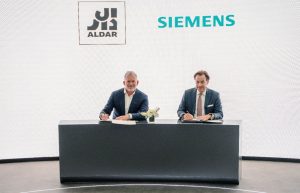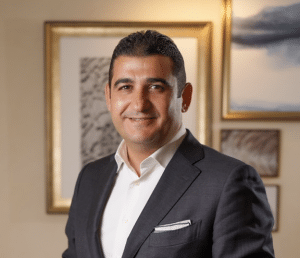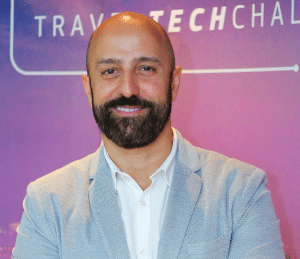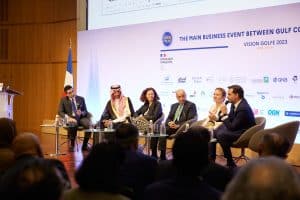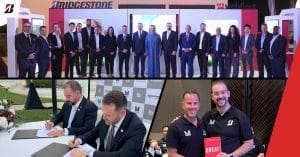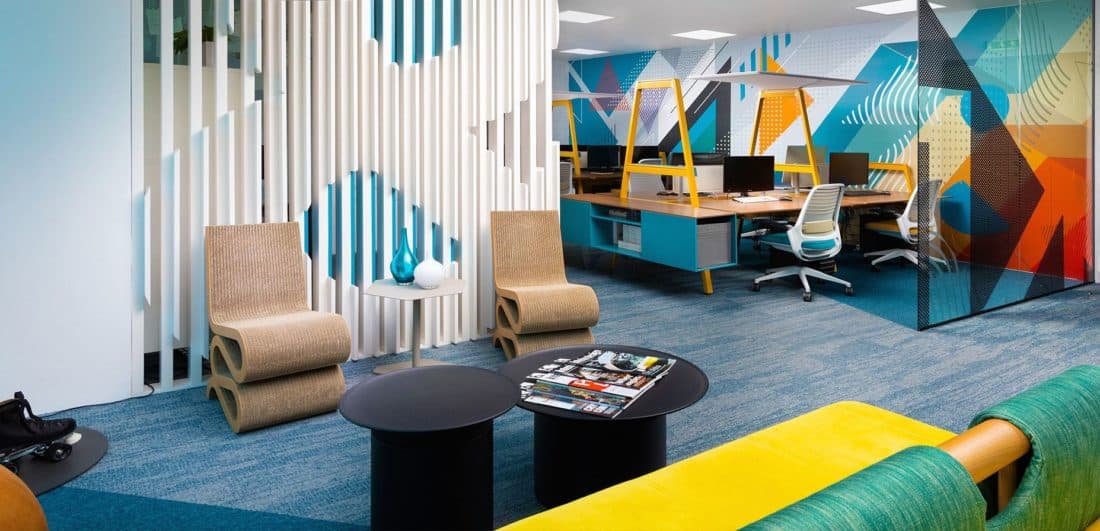
Where do we go from here (Part 1)
By Marina Mrdjen Petrovic, marketing & communications manager, OFIS
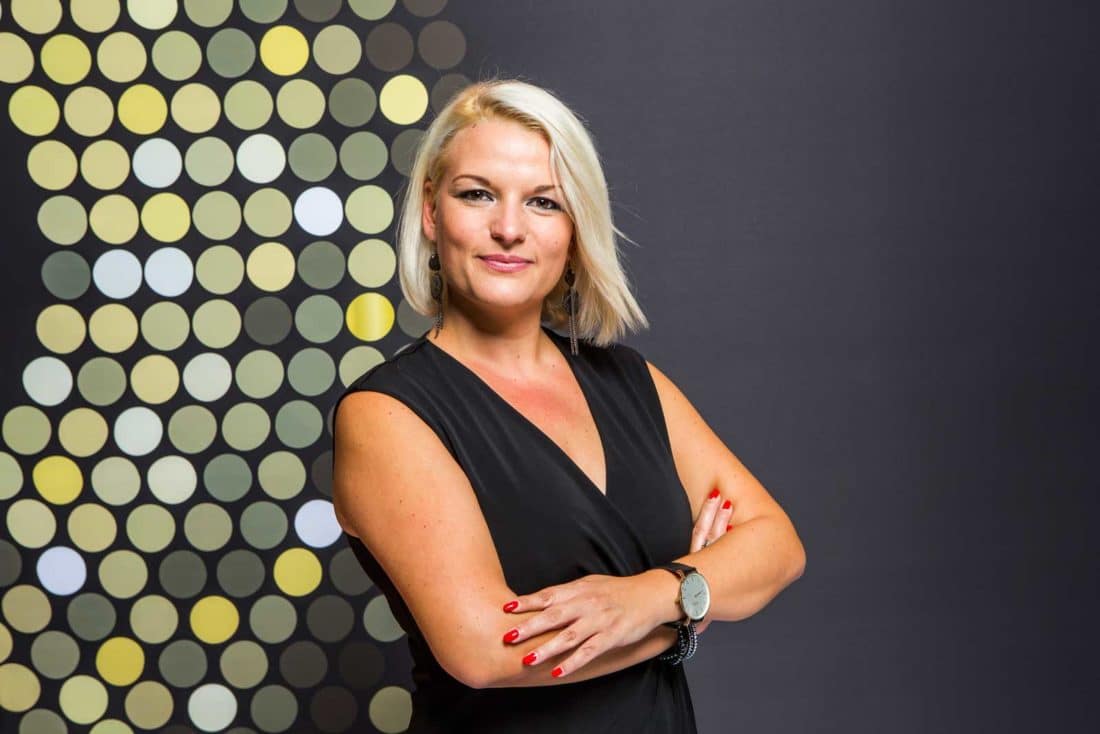
Amid the COVID-19 pandemic, the global interior design community is beginning to think differently by looking at future epidemic prevention strategies that can be implemented across various commercial spaces. And although it may still be difficult to predict what the right way forward would be, the new pandemic will inevitably bring about a new norm not only in the way designers approach their future projects but also in the way we all think, live, work, shop and gather. Will interior designers working in the region be rethinking proximity in spatial design? And how will they manage to create spaces where people can convey, engage, and interact with one another while still feeling safe and keeping a distance?
SHARING ECONOMY 2.0
Pallavi Dean, founder and creative director of Dubai-based design studio Roar, shares her thoughts on the current COVID-19 pandemic and our initial response to it: “We as human beings are often more reactive, rather than being proactive, so when something hits us, we then suddenly wake up and say: “Oh my God, what are we going to do about it? We had similar threats of a pandemic for quite some time with MERS and SARS [viruses], and we didn’t do anything about it. Now, it hit home, and suddenly, all of us are awake.” With growing concerns about the possible health risks of being in overly crowded spaces, Pallavi says that popular concepts such as Airb&b, Uber, Wework “would never work for her.” “I could never book through Airb&B,” she says, describing herself as a true germaphobe. “The sharing economy, however, was created to solve real social problems such as urbanisation and urban density, so it was a great solution on a microeconomic level. Let’s look at office spaces, for example. Every business owner, including me, is thinking how much real estate we should dedicate per employee, and that’s why concepts such as co-working spaces are here to stay as they were generated from a real need. It will be interesting, however, to see how sharing economy 2.0 will look like.”
In its latest report titled “COVID-19 Global Real Estate Implications”, JLL’s research team revealed that the office utilisation rates will fall due to an increase of remote working, which will make “landlords with exposure to short-term leases the most vulnerable.” “Co-working operators, in particular, may be at risk if members decide to cut short-term contracts; hybrid operators with more secure medium-term income will be less exposed,” the report further states. In the past years, both social and flexible co-working concepts have inspired designers to rethink the way traditional offices are designed with so-called communal spaces becoming a prominent part of workspaces. But, could such areas that bring together a sizable number of people, lose their appeal? “When you look at office design, it usually caters to two personalities – introverts and extroverts, and our job as designers is to make them feel comfortable in different spaces. So, post-Covid, we will be designing for a germaphobe, like myself, and someone who’s quite casual about it and still thinks that Coronavirus is just a regular flu,” adds Pallavi. According to her, designers will still have to offer communal spaces for people who feel comfortable hot-desking and working in shared spaces. The flip side of it will be creating more individual offices. “I’ve never been a fan of big communal spaces. Call me old-school, but I am a big fan of personal spaces and assigned desks. I like having my sketch papers and pencils where I left them,” she says.
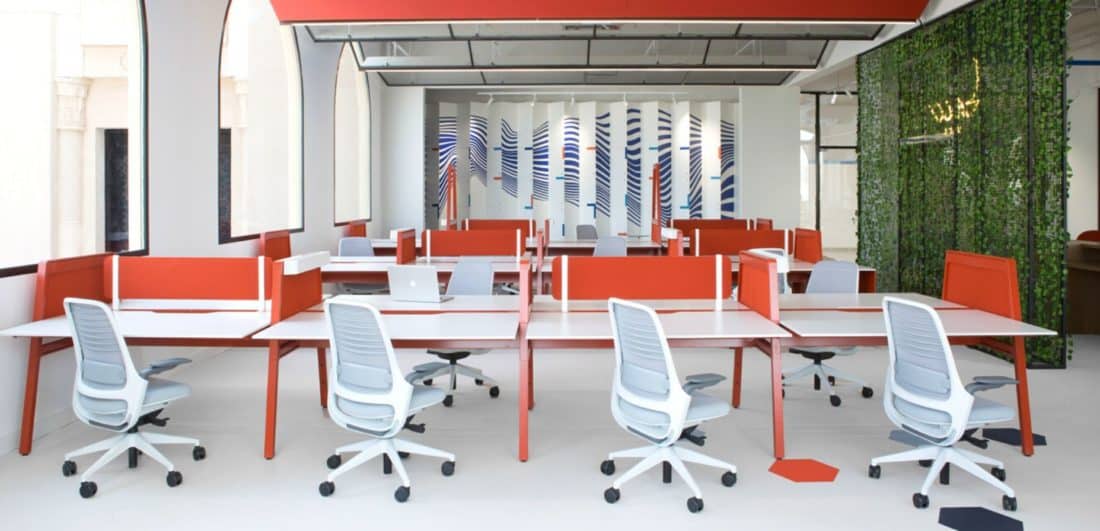
BACK TO WORK – BACK TO CUBICLES
The majority of workers in the UAE (52%) share private offices; far more than the global average, which is 37%, according to the Steelcase employee engagement report, published a few years ago. Entirely open-plan offices are rare in the UAE, only 11% compared to a global average of 23% with the majority of workplaces consisting of both open-plan and private spaces. “People have been ridiculing the corner office and traditional office concepts that are still prevalent here in the Middle East, but if you look at any research on office design, employee engagement is far better if space is designed to support our individual needs,” adds Pallavi. “I need to be in a confined space so I can do focused work.” So, what is the solution for already existing open-plan concepts? “I would like to see what’s the COVID version of a cubicle?” asks Pallavi. Similarly, Carla Conte, creative director of Brand Creative, prefers shared private offices to open-plan spaces. “We have redesigned our office last year, and I’m also kind of old school. I share a private office with a managing director, and I need my own space for deep, focused work.” Interestingly, Carla and her design team have chosen Bivi workstations from Steelcase, a configurable desking system range inspired by the co-working and startup culture. “The majority of our team works in an open-plan setup, which they like as they collaborate and work in teams. However, once we go back to work from the office, we will be allowing people to step away from their desks and use our glass-enclosed meeting rooms as their temporary offices if they feel that they need that extra private space,” explains Carla. Apart from rethinking proximity in workspaces and greater awareness for sanitization, Carla points out another crucial preventive epidemic strategy: if you’re sick, you better stay at home. She comments: “I will take the role of being that captain and saying to my staff that ‘if you’re sick, even remotely sick, you need to stay at home.’ It’s a collective responsibility, and the only way we can take care of each other. If someone turns up sick and touches all the door handles in the office or cupboards in the pantry, there is nothing you can do, so we have a responsibility to set new rules on how an office is run.”
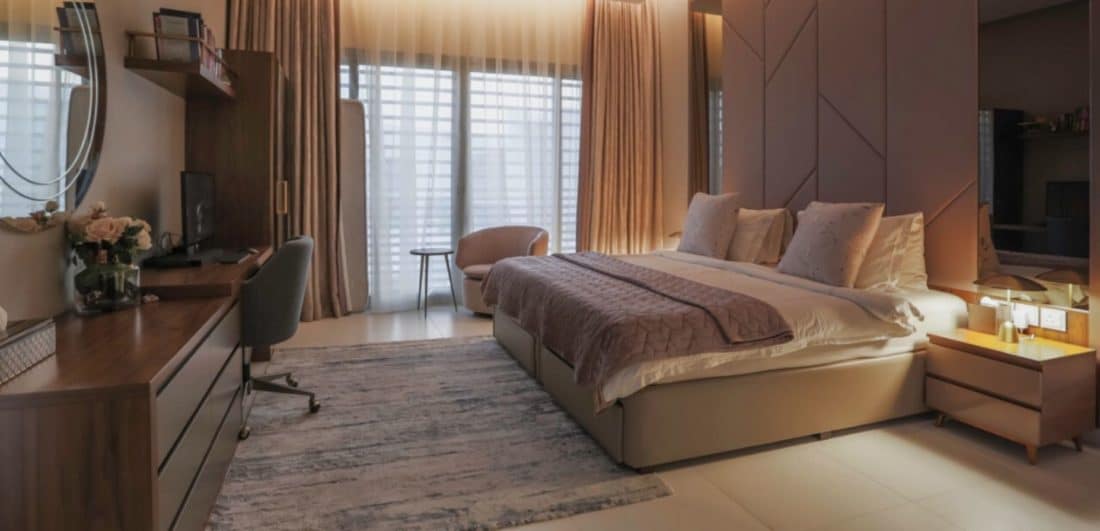
HOME SWEET HOME: REMOTE WORKING
UAE-based design director and co-founder of Interspace, Melani Sabhaney, says that some of the lessons learned during the recent transition to working remotely can be ultimately taken back to the design studio. “I would have never thought that I could run my design company and run projects out of my living room. In our studio, everyone has their assigned space but what we realized is that the back-end work can happen remotely. Until everything settles down, we will be implementing a rotation system, so the team doesn’t have to be in the office at the same time. No one exactly knows whether everything will be the way we left it and whether we will need such large office spaces in the future,” comments Melani. She predicts that the current virus outbreak will also impact future residential projects as there will be a higher demand for home offices. “In the majority of our residential projects, a home office was often a requirement, but I believe that we will rethink these spaces in a way that cater to full-time work, rather than just occasional,” concludes Melani. Note to editors: “Where do we go from here” is a 3-part blog series, bringing you highlights from a recently held online panel discussion co-hosted by OFIS and Cosentino, which featured three prominent industry leaders – Pallavi Dean, founder and creative director at Roar, Carla Conte, creative director at Brand Creative, and Melani Sabhaney, co-founder and design director at Interspace.
“Where do we go from here” is a 3-part blog series, bringing you highlights from a recently held online panel discussion co-hosted by OFIS and Cosentino, which featured three prominent industry leaders – Pallavi Dean, founder and creative director at Roar, Carla Conte, creative director at Brand Creative, and Melani Sabhaney,
co-founder and design director at Interspace.



